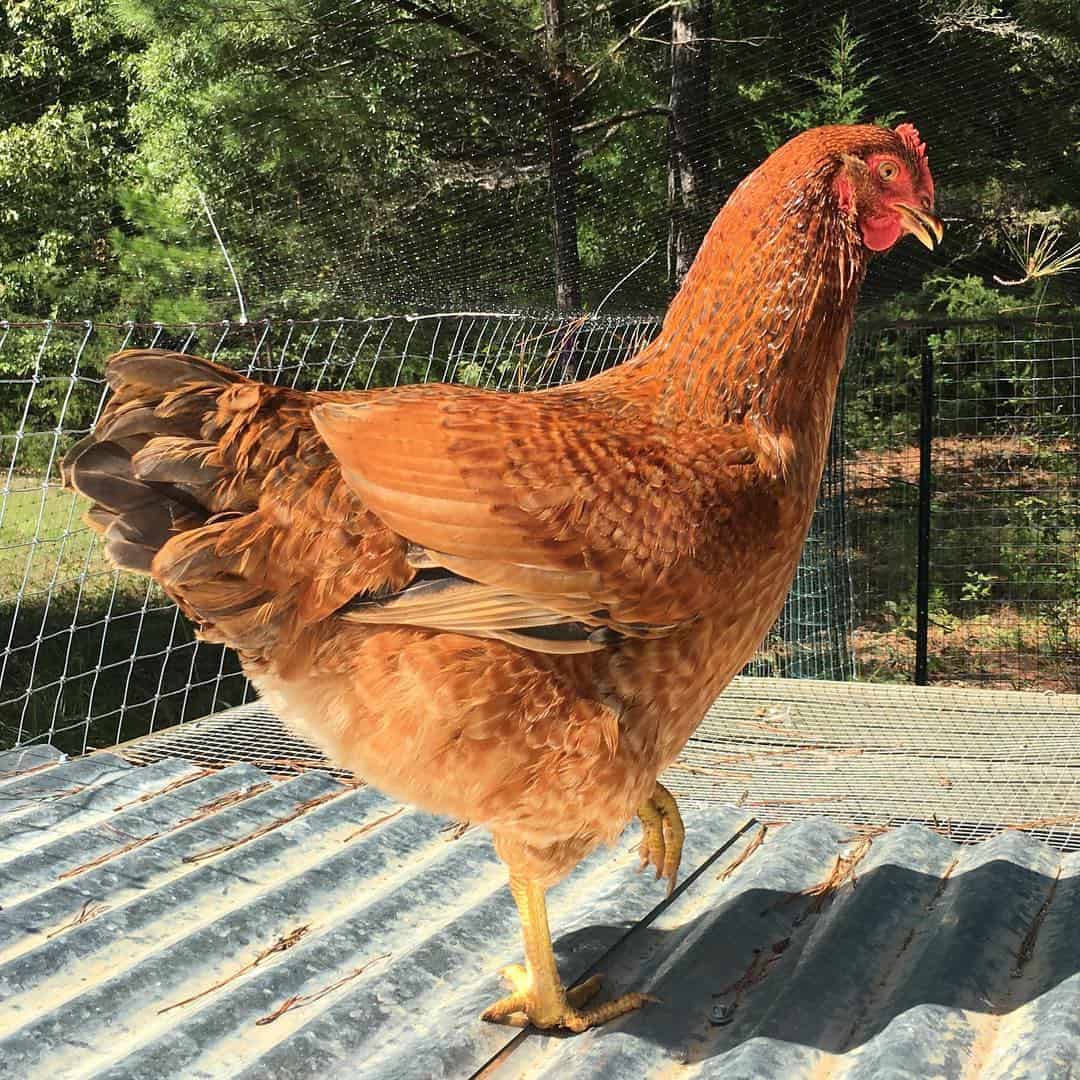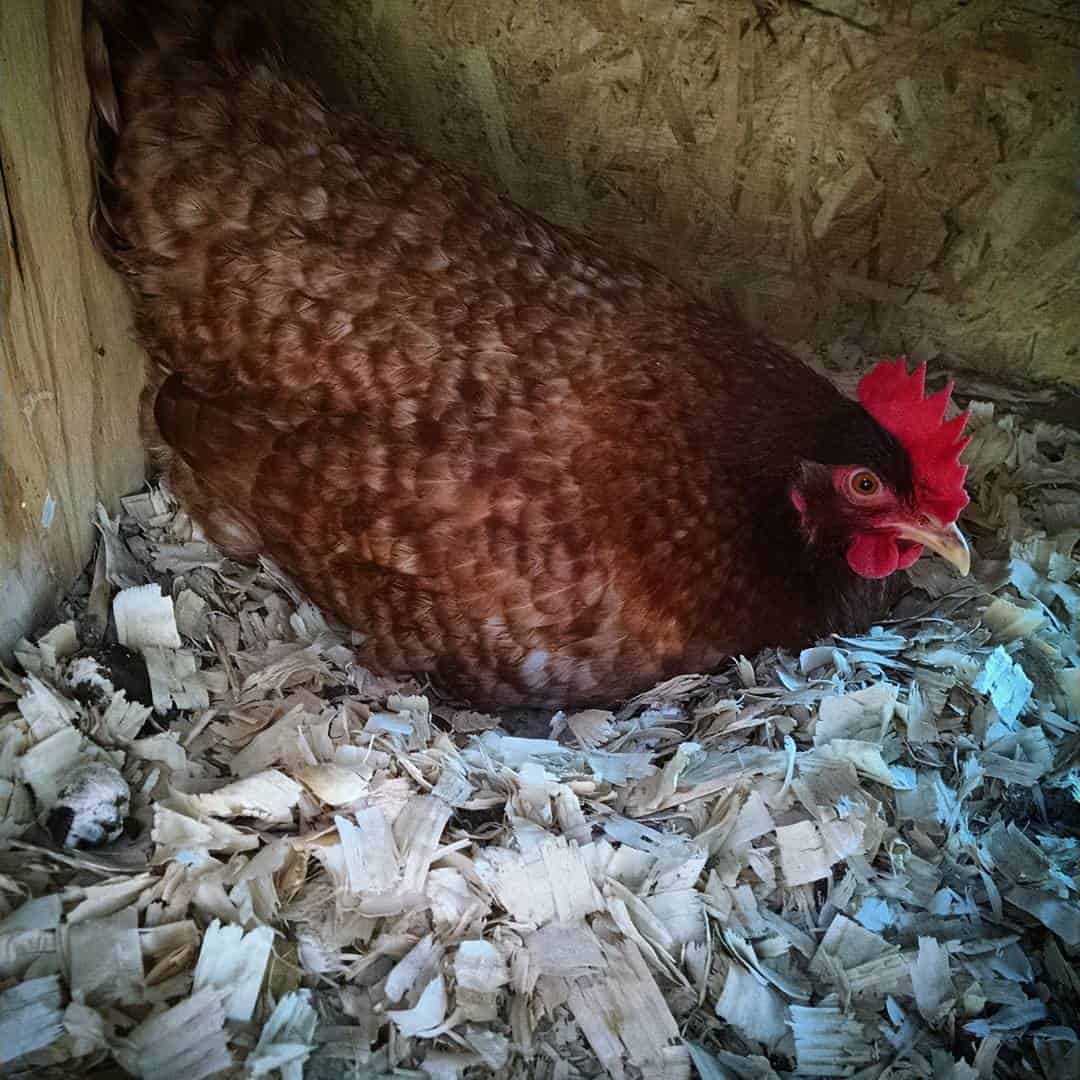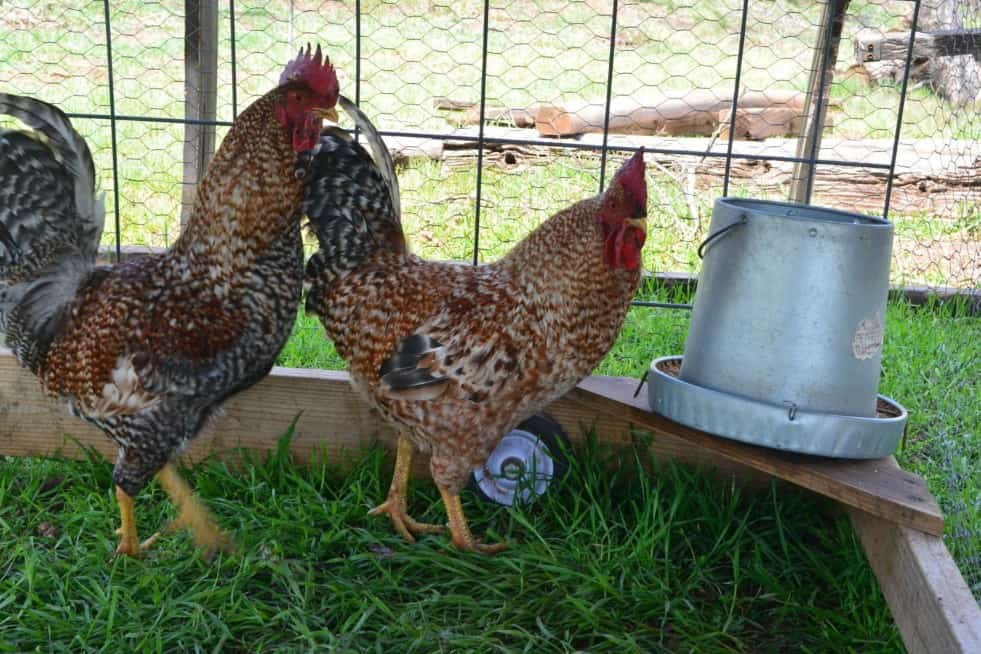Rhodebar chickens are a dual-purpose breed, suitable for both egg and meat production. It provides a wide range of benefits both to professional farmers and backyard raisers. To help you start your journey raising this useful breed, read on for more information about their background, personality, health, and what makes them unique.
Where did the Rhodebar Chicken originate?

The Rhodebar chicken, an exceptionally rare breed, was successfully created in the United Kingdom in the 1950s. It was bred from the Barred Plymouth Rock, the Rhode Island hen and the Golden Brussbar cockerel. It was first called Redbar but was given a more suitable name which was Rhodebar.
During this period, breeders developed several strains with the goal of creating auto-sexing breeds that can also be great egg layers. They initially used the Brussbar, an autosexing breed derived from the Barred Plymouth Rock and the Sussex. It was then crossed with Rhode Island Reds for the improvement of the chicken’s egg-laying ability.
The genetic engineering between the autosexing characteristics of the British Brussbar and the egg-laying capacity of the American-bred Rhode Island Red resulted in the dual-purpose Rhodebar.
This breed is not only a cross between two cultures but also a highly prized combination of practicality and distinct appearance. Since the breed produces visibly sexable chicks that can also lay tinted eggs, it offers a functional advantage to homestead farmers and poultry enthusiasts.
The Rhodebar gained its standardization from the Poultry Club of Britain in 1952. Despite its breed standard approval, it never reached popularity as a show breed. However, it has always been known as a utility breed which makes it essential for livelihood purposes.
What does a Rhodebar chicken look like?

What makes Rhodebar chicken rare is its inclusion in the unique breed group of auto-sex chickens. Autosexing breeds which include nearly extinct purebreds and heritage chickens have distinct barring and feather colors.
The chicks can be easily sexed as male or female even at a day old. due to their distinct physical features. Sexing the chicks is fairly easy. The females have dark stripes down their backs, while the male chicks tend to have lighter coloring. Before we dive into their characteristics, let us first define a few terms.
- Barring – barring refers to the stripes or “bars” on the chicken’s feathers.
- Plumage – a collective term that refers to the feathers of a chicken
The following table shows the characteristics of the male and female Rhodebar chickens.
Characteristics of Male and Female Rhodebar Chickens
| Male | Female | |
| Plumage | Deep red with barring | · Deep red with grayish barring
· Black barring towards the center |
| Barring | Narrow towards the lower part of their bodies | · Narrow towards the upper body
· Black barring is longer than the gray barring |
| Tails | Upturned with various colors such as light brown, white, and black. | Smaller and has black and white colors. |
| Standard Weight | Cock: minimum of 8.5 lbs
Cockerel: 8 lbs |
Hen: minimum of 6.5 lbs
Pullet: 5.5 lbs |
| Body | Broad with long backs and full breasts | |
| Face | Red with red or orange eyes
Eyes have clearly defined pupils |
|
| Combs, wattles, and earlobes | single, upright combs
Rounded wattles Comb, wattle, and earlobe are bright red |
|
| Beak | Bright yellow and short | |
| Legs and Feet | Bright yellow
Has four toes |
|
The adult chickens have a very strong resemblance to Rhode Island Reds in terms of color and shape except that the latter has black tips on their tail.
You have to watch out also for the following serious defects that can be found in some Rhodebar chickens.
- Crooked breast or any deformities in the body
- Ear-lobes that are not red
- Wry tail
- Legs that are not light willow, yellow, or orange
- The male’s comb is falling over or appears to be twisted
- Pupils that are not clearly defined or are not round
What is the personality of Rhodebar chickens?

The Rhodebar breed is known for its friendly and docile nature. However, the hens are calmer than the roosters. The roosters can become quite aggressive and tend to bully weaker chicken breeds such as Cochins or Polish chickens.
But don’t let the strong personality of the Rhodebar males prevent you from raising them. They can still become friendly if they are given a chance to have good interactions with humans and other birds.
Keep in mind that these chickens are very trusting animals so it is important that chicken keepers build a good relationship with them. It would be best not to traumatize or scare them so they’ll learn to behave nicely. Once they have earned their carer’s trust, they can become good companions for young and old alike.
The hens love to interact with humans and would sometimes sit on the lap or perch on the shoulder. They love being held and would often seek human touch. Roosters, just like most boys, can be boisterous and would playfully peck on legs. They love to run up and down hills.
In addition, Rhodebar chickens love to walk around and forage for worms, bugs, and other natural food. They do not damage plants and garden vegetables. These chickens are naturally curious and would often scratch the soil to look for interesting things.
These hardy birds can easily adapt to any climate which makes them a good option for pasture raising.
Are Rhodebar hens good for laying eggs?

The Rhodebar hens are exceptionally good layers and can produce about 180-250 light brown eggs in a year. At around the age of six months, they can already produce about 200 eggs during their first laying period.
The number of eggs produced will then vary within the range of 150-250 eggs in a year. Rhodebar hens are also known to lay large eggs so they are beneficial not only for personal consumption but for business purposes as well.
These resilient chickens can still lay eggs even during the winter. They are also able to produce eggs even in places that have long periods of cold weather. However, the number of eggs produced may dwindle during the cold months but the quality can still be excellent as long as they are provided with care and proper diet.
Check out this video of a Rhodebar hen as she is about to lay eggs.
What can you do if egg production is low?
There may be times when egg production will become significantly low. If this happens to your hens, you can introduce a new line into your strain. What you can do is find some good quality Rhode Island Red hens. Then, you put your Rhodebar cockerels over the Rhode Island females.
This mating process will produce pure hens. However, the cockerel offspring will not be pure. The next step would be to mate your Rhodebar cockerels with the pure hens. This process will then produce an all-pure offspring. From there on, you can continue the line and hopefully, egg production will flourish.
Are Rhodebar hens broody?
Rhodebar hens are not commonly broody so they are perfect for egg production. But there are times when they decide to switch on their mothers’ instincts and start to brood. Since they are naturally calm and docile, they can patiently sit on their nests to protect their eggs.
Rhodebar Chickens Health Care

Rhodebar chickens are hailed for their excellent health and robustness. They are also known to thrive in various climates and weather conditions. Unlike other more famous poultry groups, they have no known breed-specific illnesses. But sometimes, these sturdy birds still catch minor health issues such as the following:
Fowl mites
Fowl mites move around on the chicken’s skin. The parasites look like small red or black dots and their eggs appear to be hard bubble-like clusters. They can bite and suck as much as six percent of the chicken’s blood supply per day.
The chickens may suffer from a lowered immune system and anemia due to heavy mite infestation. If left untreated it can cause severe illnesses or even death.
Chicken Lice
A less invasive parasite is chicken lice. These nasty critters look like moving rice grains and lay their eggs at the base of the feathers. The feast on dead skin dried up blood, and scabs from wounds. Infestation is not fatal but it can make the Rhodebar lose its beauty and vibrance.
Make sure to inspect your flock twice a month to check for these parasites. Some common signs that your chickens are already being infested are dirty-looking feathers, pale comb, scabs, and bald patches. You might also notice that there is a significant decrease in egg production and physical activity. When this happens, you may apply lice and mite sprays available at most pet stores.
This video will guide you on how to treat lice and mites found in your chickens.
Prolapsed Vent
Also referred to as “blowout”, a prolapsed vent is most common in breeds who are prolific producers of eggs such as Rhodebar hens. This condition is characterized by an inverted vent that protrudes from the bird’s body. It is treatable especially when caught early on.
Since obesity is one of the causes of vent prolapse, proper diet and exercise for your birds are the best prevention from this condition.
9 Tips for Raising Rhodebar Chickens

The Rhodebar chicken is a low-maintenance breed so caring for them is fairly straightforward. To keep them in tip-top shape, we’ve rounded up nine care and maintenance tips.
- Build a sturdy and secure coop for your chickens. Even if Rhodebars love to roam around, they still need a home where they can peacefully lay their eggs and rest for the night.
- Provide clean nesting boxes that are placed in a secluded and well-ventilated spot. Since Rhodebar hens lay a large number of eggs, they need a safe space where they can do their job and recharge.
- Install wooden roosting perches higher than the nesting boxes. It will ensure that your chickens have a secure place to sleep. It also prevents them from parasites and vermin.
- Clean the chicken coops regularly. Make sure to get rid of loose feathers that serve as a breeding ground for lice and mites.
- Provide your flock an area where they can take a dust bath. Dust baths play an important role in a chicken’s life. It is where they clean themselves, relax, and socialize with other chickens in the flock.
- Make sure to properly quarantine birds that are new arrivals to your coop. Don’t allow them to mingle with your existing flock until you’re sure they are all healthy and safe.
- Install heaters in the chicken coop to help them stay comfortable during wintertime. Since Rhodebars can be prone to frostbite, maintaining warmth in the coop is crucial for their well-being during winter.
- To facilitate a productive egg-laying process, equip the coop with soft, yellow light. Make sure to set it up to turn off at night since too much light may irritate and cause them stress.
- Feed your flock a 16 % layer feed. Give them calcium supplements to maintain the quantity and quality of the eggs that they will produce.
In Conclusion
Whether you’re new to poultry raising or a seasoned one who’s looking for a new breed to raise, the Rhodebar breed is a highly recommended choice. Its laid-back personality and low-maintenance care will provide you with a more relaxing and enjoyable time as you nurture your flock.
Also, the breed’s egg-laying capacity, simple nutritional requirements, strong immune system, and robust health also make it a more economical choice.
Although Rhodebar roosters may require more attention, proper care and dedication can effectively manage their behavior.


Joseph Hudson has been raising chickens for over 15 years. In 2018, he completed the Agriculture & Natural Resources program at Mt. San Antonio College. He currently raises over 1400 chickens on his 7.5-hectare farm. He keeps sharing his experience on raising healthy and happy chickens on Chicken Scratch The Foundry.







